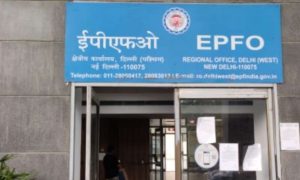Budget 2025 is expected to reflect the Centre’s commitment to fiscal consolidation with the government setting an ambitious target of reducing the fiscal deficit to below 4.5 per cent of GDP by FY26.
With Finance Minister Nirmala Sitharaman all set to table the Union Budget in Lok Sabha on February 1, expectations are that the focus will remain on continuity rather than dramatic change. Per economists and experts, Budget 2025 is expected to reflect the Centre’s commitment to fiscal consolidation with the government setting an ambitious target of reducing the fiscal deficit to below 4.5 per cent of GDP by FY26.
Also Read :Why Is Chinese AI DeepSeek Raising Worry For Investors, Sending Shock Waves Across Tech Stocks?
Against the backdrop of slower domestic economic growth with GDP slipping to 5.4 per cent in Q2FY25 vs 6.8 per cent RBI forecast, a weakening currency, and global uncertainties, Emkay Global said, “We expect a relatively quiet budget, with a focus on continuity rather than dramatic change. A countercyclical stimulus is unlikely, as it would entail straying from the pre-announced consolidation path. The heavy lifting would have to be done by relaxed lending guidelines and monetary easing further down the line. We expect some sector level changes.”
Budget 2025 will have to navigate a balancing act of ensuring fiscal consolidation while sustaining economic growth. Investments in infrastructure, manufacturing, and welfare schemes, alongside prudent taxation policies, will be essential in fostering sustainable and inclusive growth, said economists.
Also Read :Budget 2025-26: Income Tax Cuts and Increased Gold Tariffs Anticipated, Says Report
Suraj Pratap Malik, Whole Time Director, Infomerics Ratings, said, “Globally, there are issues of heightened geopolitical dynamics and a paradigm shift from globalization to protectionism. Domestically, India is characterized by a cyclical deceleration. These and other factors make the task of maintaining fiscal discipline while meeting the revolution of rising expectations of citizens and businesses challenging. Against this backdrop, we expect the Budget 2025-26 to continue on the fiscal deficit glide path, provide a thrust on consumption, give some tax concessions and relief to MSMEs, rationalize the tax system, ease tax compliances, and focus on infrastructure.”
Also Read :How To Withdraw Your PF Easily Using UMANG App? A Step-By-Step Guide
He further added that in FY25, a robust tax collection, mainly driven by direct taxes, has given the government some space to carry out additional current expenditures while capital expenditures have remained muted thus far. Going forward, growth with distributive equity is likely to be the mantra.
In terms of tax collection, gross tax revenue is projected to grow by 10.4 per cent in FY26 while direct tax collections might face headwinds due to anticipated tax relief, and corporate tax collections are estimated to show improvement. GST collections are expected to grow at a rate of 11 per cent in FY25 and 11.4 per cent in FY26. Excise duty collections are expected to remain subdued.
Fiscal compression not alarming
The overshoot on fiscal consolidation in FY25 was a major drag on FY25 growth. The good news, Emkay Global said, is that in FY26, the extent of consolidation needed to meet the 4.5 per cent target is a mere 20bps, implying a much milder drag on the economy. Falling tax buoyancy is still a challenge, but the government is not under pressure to undertake major expenditure cuts. This augurs well for a mild growth recovery in FY26.
Also Read :Petrol, Diesel Fresh Prices Announced: Check Rates In Your City On January 28
Capital expenditure
While the central government capex growth has peaked (31 per cent CAGR during FY21-24), Emkay said that it is expected to record a modest growth from here, largely tracking nominal GDP. “The good news is that the 10 per cent expected miss in FY25 sets a low base for FY26 – but beyond that, expect muted growth. We are not building in a downturn but a more normalized level of growth. The focus will, therefore, be on how the sectoral allocation of capex pans out,” the report by Emkay stated.
Also Read :Gold, Silver Prices Fall On January 28: Check Precious Metal Prices In Your City Today
For infrastructure, the central government’s capital spending has surged from Rs 1.97 lakh crore in FY15 to Rs 11.1 lakh crore in FY25 (BE), which shows the government’s commitment to infrastructure-led growth.





































